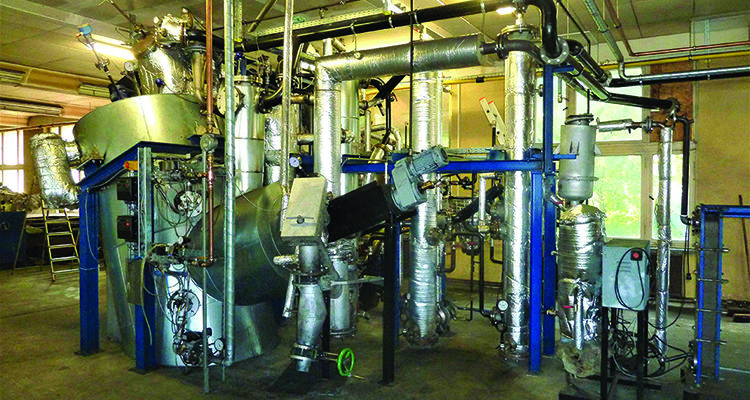As the use of composite materials continues to grow in many different markets, so does the industry’s search for better ways to recycle its products and reclaim the valuable materials that are locked inside them.
Consumer demand is one driver of these recycling efforts. People want to deal with companies that have shown a commitment to sustainable operations. “I think the social pressure is increasing to drive behavioral changes in the industry,” says Andrew Maxey, CEO of Vartega. “The consumer is coming to expect it. We are incentivized through public perception to make some changes here.”
There are also sound economic reasons for supporting recycling. Companies can save money by incorporating reclaimed materials into their applications and releasing the production energy stored within them. “The reality is if we’re going to put a lot of energy into producing materials in the first place, there’s no reason not to reclaim or recover the energy the best we can,” says Maxey.
Virgin Properties at Half Price
Colorado-based Vartega has developed a patented process that recovers the carbon fiber from high-grade, pre-impregnated scrap. The thermoset material that is being recycled – uncured prepreg and dry fiber fabrics – comes primarily from the aerospace industry, which has a scrap rate of about 30%.
The typical prepreg contains about 65% carbon fiber, and Vartega is able to recover it all. Its low-temperature dissolution process employs several different process chemistries to wash away the resins in the scraps and remove the original sizing or chemical binder on the carbon fibers. Almost all of the chemicals used in the dissolution process can be recovered and reused again.
The reclaimed carbon fiber has the same properties as the virgin fiber. “Because we are not degrading or damaging the fiber surface at all, we maintain the mechanical properties, including the strength and stiffness of the carbon fiber,” Maxey says. The fiber has high electrical conductivity and minimal thermal expansion as well.
The stringy, recycled carbon fiber that comes out of the process is chopped and consolidated with a compatible binder for thermoplastic compounding. Vartega is concentrating primarily on the thermoplastic market at present, but has produced carbon fiber for non-woven thermosets as well.
Vartega sells its recycled carbon fiber products at about half the cost of those made with virgin material. Right now, the biggest demand is for polypropylene and polyamide carbon fiber reinforced thermoplastics, according to Maxey. Customers that use this reclaimed carbon fiber include consumer product companies, sporting goods manufacturers and the automotive industry.
“This technology helps solve a problem for the waste generators, but it also helps create low-cost, recycled carbon fiber downstream, which unlocks opportunities that couldn’t exist otherwise, like high-volume lightweighting for the automotive industry,” Maxey says.
Over the last 18 months, Vartega has been working with IACMI – The Composites Institute on projects that could close the loop on automotive carbon fiber scrap and eventually make high-volume production possible. The goal is to address the challenges of creating consistent recycled carbon fiber thermoplastics for use in vehicle lightweighting. Other project partners include Ford, Dow, Michelman, Techmer PM, Michigan State University, Colorado School of Mines, Oak Ridge National Laboratory, the University of Tennessee and the University of Dayton Research Group.
“Carbon fiber recycling technology has matured significantly over the past decade, but several challenges still exist in producing materials at automotive scale,” says Maxey. “We recognized that a holistic approach needed to be taken to create supply chain solutions for recycled carbon fiber.” He will share some of the data from this project at ACMA’s virtual Composites Recycling Conference in May.
Processing Close to the Source
Vartega has two business models for its recycling technology. The first is the scenario in which Vartega processes the manufacturing scrap at its facility in Colorado and sells the recycled carbon fiber. The second model is onsite or local recycling, described here.
Vartega has designed its carbon fiber recycling equipment to fit within a modular unit that companies can lease and install at their production sites. “What’s unique about this is that we can deploy the technology close to the source of the manufacturing scrap,” explains Maxey. The manufacturer can run the process, or Vartega will come in and run it for them.
All of the post-processing – converting the reclaimed carbon fiber into saleable products – will remain in house at Vartega for now since many customers don’t have an immediate reuse application. “We’re able to close the gap in the supply chain and connect a captive supply to an unmet demand downstream,” says Maxey.
The markets Vartega is targeting for these modular units are composites manufacturers serving the aerospace industry and their carbon fiber suppliers, which send hundreds of tons of scrap material to landfills each year. If manufacturers don’t want to set up their own processing centers, Maxey says Vartega could establish regional recycling centers to handle scrap from many different companies. Although this wouldn’t be as efficient as having a unit onsite, companies could reduce their transportation costs because they wouldn’t have to send their waste long distances to Vartega’s Colorado location.
Over time, Vartega plans to expand the recycled products that it offers. It is already working with partners to develop the technology to recover resins and sell them, and it may expand into thermoplastics recycling at some point as well.
Solving a Big Problem
One very large recycling challenge, and one that’s been garnering a lot of press attention recently, is end-of-life composite blades from wind turbines. Media outlets, including NPR, BBC and Bloomberg Green, have carried stories about the very limited options that currently exist for recycling these giant composite components. A Bloomberg article published online on March 9 notes that in the U.S. alone about 8,000 of these blades will be removed from service annually for the next four years, and almost all of them are destined for landfills.




